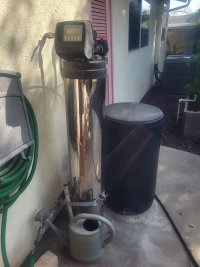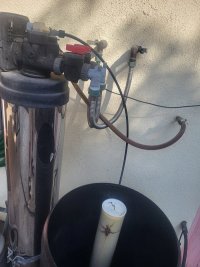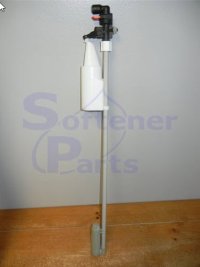Jag_Man653
Member
My system has been in service about 16 years with resin replacement a couple times. I've lost the receipts & manuals so don't the model, but I think it's a WS1 or WS2.
My records show that the outside water hardness is 26 and inside is 11, whereas back in 2015 the inside was around 1. Clearly, the resin needs to be replaced.
The fellow who has been servicing our RO system in recent years says he will replace the resin for about $600. I got a similar quote from a company that sells & services Clack systems.
Some research shows I can have a Flect 5600 Timered system from a discounter for about $700. I'm thinking that would be a better investment than spending $600 on a 16 year old Clack. An attraction to the Flect is power outage protection so I wouldn't have to reenter all my settings every time there's a momentary power outage.
Now my questions.
First, how do I tell if I have a Clack WS1 or WS2? Seems there should be a label or marking somewhere on the control head but I can't find it.
Second, there are different models, e.g., Fleck 5600 SXT for which I've watched a nice YouTube on installing it. So how does SXT differ from the Timered model?
Third, there are options such as 1"vs. 3/4" . Does this refer to the house water pipes or the size or the size of the fitting on the water softener control head?
Finally, what am I missing? I.e., is there another Flect model I should be looking at?
My records show that the outside water hardness is 26 and inside is 11, whereas back in 2015 the inside was around 1. Clearly, the resin needs to be replaced.
The fellow who has been servicing our RO system in recent years says he will replace the resin for about $600. I got a similar quote from a company that sells & services Clack systems.
Some research shows I can have a Flect 5600 Timered system from a discounter for about $700. I'm thinking that would be a better investment than spending $600 on a 16 year old Clack. An attraction to the Flect is power outage protection so I wouldn't have to reenter all my settings every time there's a momentary power outage.
Now my questions.
First, how do I tell if I have a Clack WS1 or WS2? Seems there should be a label or marking somewhere on the control head but I can't find it.
Second, there are different models, e.g., Fleck 5600 SXT for which I've watched a nice YouTube on installing it. So how does SXT differ from the Timered model?
Third, there are options such as 1"vs. 3/4" . Does this refer to the house water pipes or the size or the size of the fitting on the water softener control head?
Finally, what am I missing? I.e., is there another Flect model I should be looking at?



